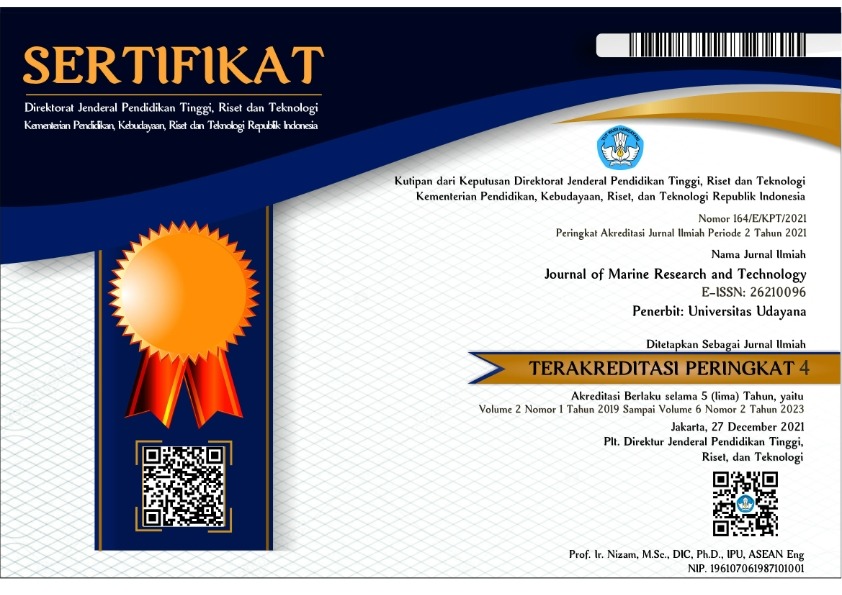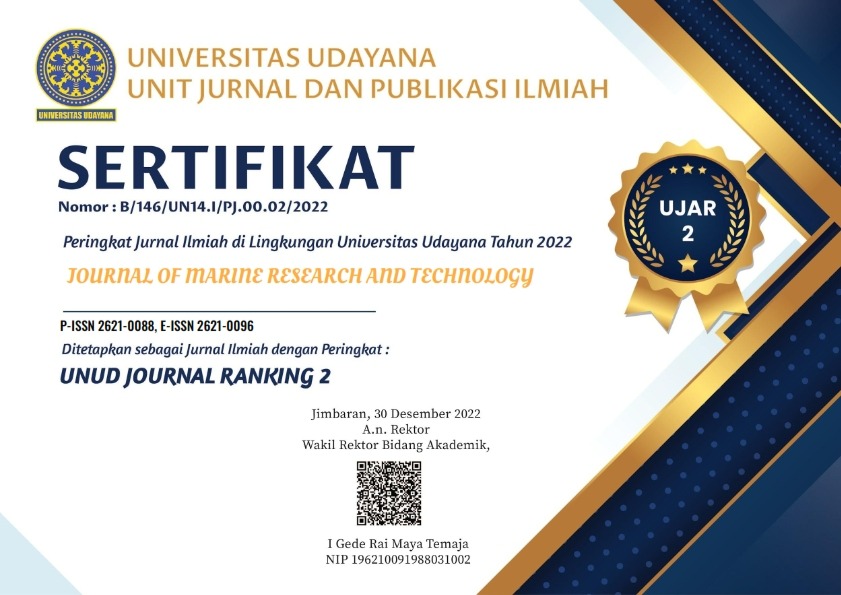Karakteristik Mikroplastik Pada Ikan Laut Konsumsi Yang Didaratkan Di Bali
Microplastics: Plastic: Waste: Fish
Abstract
Studies over the past decade have shown that microplastics are widespread in marine environments, at sea level, on coastlines, and the seabed. Microplastic sources come from small particles used in the cosmetic industry and plastic industry base materials. Other microplastic sources emerge through the degradation of larger pieces of plastic in the environment due to physical and chemical processes, caused by light, heat, oxygen, water, and organisms. Microplastics tend to be digestible by marine organisms and potentially transferred to higher trophic organisms through the food chain, and thus toxic pollutants will potentially harm marine organisms and even humans through bioaccumulation and biomagnification. This research was conducted to determine the characteristics of microplastics that pollute marine fish consumption that is landed in Bali. Samples were gathered from traditional fishermen who landed their catch in Bali. Microplastic is identified in the digestive tract of fish. The samples of fish obtained by Decapterus spp (Selayang), Auxis Rochei (tongkol), Rastrelliger spp (kembung), and Sardinella lemuru (Lemuru). 39 fish out of the total identified 89 fish were found to be contaminated with 69 microplastics (fiber, fragments, film) and 1 mesoplastic (fragment). The size of the plastic found is between 0.32 to 22 mm. The abundance of microplastics in fish caught in Bali's waters is 0.78 (SD 1.15) particles/fish. The finding of microplastics in the digestive tract of fish caught by traditional fishermen in Bali is feared to have the potential to harm marine organisms and even humans through the process of bioaccumulation and biomagnification.
Downloads
Copyright Notice
The copyright to this article is transferred to Journal of Marine Research and Technology (JMRT). The copyright transfer covers the exclusive right and license to reproduce, publish, distribute and archive the article in all forms and media of expression now known or developed in the future, including reprints, translations, photographic reproductions, microform, electronic form (offline, online) or any other reproductions of similar nature.






